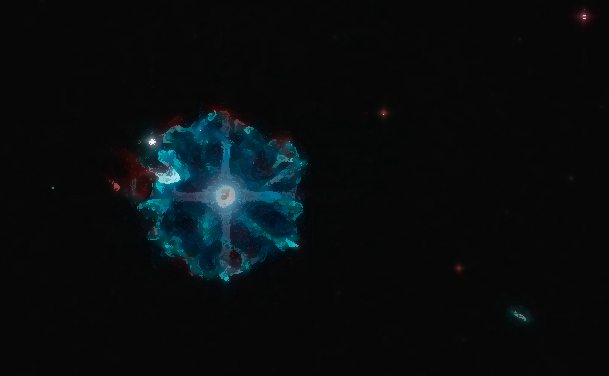A couple months ago, I saw a an amateur image of the Cat’s Eye Nebula showing an intricate web of detail around the much brighter “cat’s eye” and knew I wanted to get one of my own.
My vision was something like this artistic image.

I start in mid-August. The Cat’s Eye (NGC 6543) is in the constellation of Draco which I covered in a Constellation of the Month three or so years ago. What followed was one disappointing session after another.
One night, maybe more than one, the smoke from the western forest fires ruined the transparency and results were “meh”.
Another night, September 8th, I succeeded in capturing the nebula but I had shot at a gain of 300 and again it was “meh”.

Another night, the autoguiding was giving me grief. More on that in a moment.
Another night, everything was working great but I forgot to plug in the power to the camera which is required for cooling and two hours into my three hour run I found the camera was running 27C hotter than expected.
Finally, Sunday September 26th, I had the power on, the gain set to unity (120), the transparency was acceptable, and the autoguiding was working. I got three hours of data to stack.

I said I would talk more about the autoguiding. I know that the scope should be slightly out of balance so that the gears would always mesh and if the autoguiding has to change directions there would be no period of time when there is a gap between the worm and spur gear teeth. What I discovered was “slightly” was perhaps more than I realized. The night before this last image, the guiding was great but there was no cooling. This next evening I realized that I had forgotten to balance the mount as well so I fixed that. The subsequent guiding was awful with the mount “slightly” out of balance. So I moved the 10kg counterweight out another inch or so and guiding returned to normal.
This latest image is no award winner but maybe I’m tired of working on it. Maybe it’s time to look at something else.
